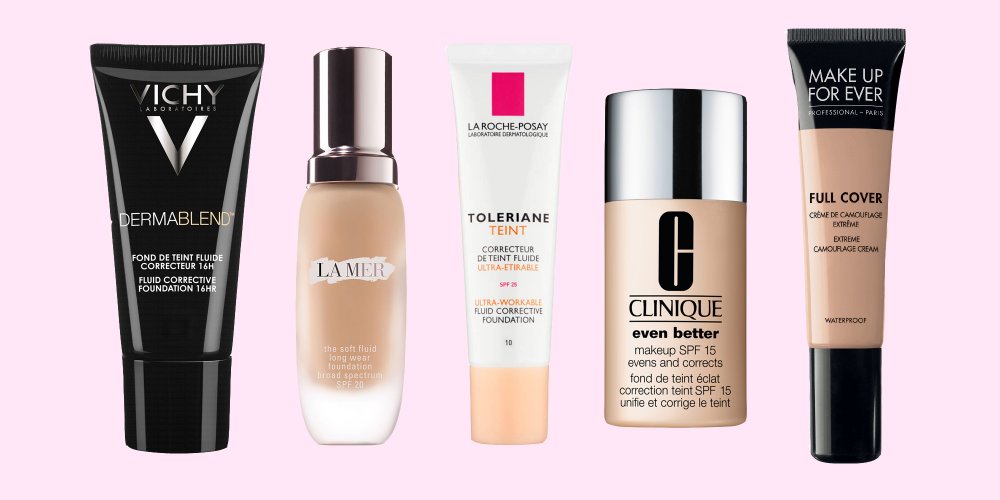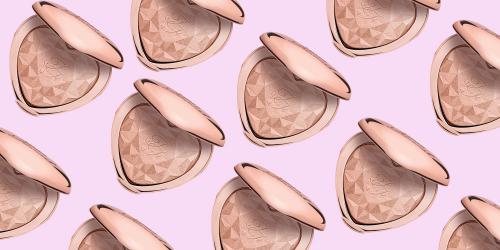In terms of skin, we are not all in the same boat. On the one hand, there are those who have little or no need for foundation, then those whose various imperfections (acne, spots, redness, scars ...) require a high coverage for a perfectly unified complexion. When part of the second category, it is sometimes difficult to find the ideal foundation, one that will hide without plastering while remaining simple application.
To enlighten us on the subject and help us make the right choice in terms of foundation coverage, the expert in dermo-cosmetics and corrective makeup of the spa La Roche Posay, Carine Larchet shares his advice and tips of pro .
Foundation covering: a product between care and makeup
A covering foundation (or concealer) is intended to hide imperfections, even the most visible. Those most often found are either vascular, such as redness , scarring or related to a pigment imbalance such as age spots , sun or vitiligo.
The specialist differentiates in the first place the foundations of aesthetic foundation "make-up medical" sold in pharmacies and drugstores. She always recommends her last ones in case of important cutaneous lesions, because they are formulated without perfume, without paraben, non-allergenic and, above all, combine care (soothing active, cicatrisants, antibacterial ...) and make-up to rebalance our skin .
In terms of texture, we have the choice between a fluid, creamy or mineral material. If our skin is dry atopic tendency , we offer a cream foundation without waiting, it will be the most pigmented and soothing. Those who wish to modulate the intensity of the product and display it as they see fit will prefer a fluid texture. Finally, the mineral powder will be suitable for normal and combination skin .
Cover without weighing down thanks to the power of pigments
"Before, the high coverage was always synonymous with thickness.But today, it is the pigments that make the coverage and the matter," says Carine Latchet. A correctness of complexion of quality must therefore have a good ratio to the thickness.
In the composition of our foundations, three pigments are essential: first, the red pigment helps to ensure the freshness of the complexion and give a natural look. Then, the yellow pigment replaces the melanin effect and colors the mixture to adapt to all skin tones. Finally, it is the black pigment that modulates the intensity of the coverage.
The foundations designed for black skin, meanwhile, are the only ones to have a blue pigment in their composition.
How to properly apply a foundation covering?
A foundation with a high coverage can be applied on the entire face or only in local correction. Depending on our wishes, the tools and method of application are different.
In order to obtain a uniform, flawless complexion , flat sponges are preferred, which allow a maximum amount of material to be deposited. On the other hand, our fingers - which are used to tap the product - are our best allies to hide the defects of a targeted area.
Finally, some parts of our face need to be unified with the rest without being corrected, so we can still spread a little material on it, why not using a flat brush or a kabuki. Thanks to the brushes the material is not smoothed but applied in a diffuse way, one thus obtains a natural rendering, ideal for a discreet makeup.
Regardless of the accessory used, our expert reminds that we must systematically apply our concealer complexion from the inside of the face to about half of it, then spread in a second time to the periphery not to weigh them down.
Master the art of retouching
Keeping an immaculate makeup from morning till night is however mission impossible. To refresh our mine in record time, Carine Larchet encourages us to bet on correctors stick or powder to avoid the unsightly (and stifling) accumulation of foundation layers.
Recall, a retouch is not a re-makeup. If everything is to be redone, it is better to remove makeup and then thoroughly remix.
Do not neglect the makeup removal
"Skin prone to imperfections is sensitive skin, so it should not be brutalized by non-adapted products.If we want to remove our foundation cover, we choose a powerful cleanser but non-irritating as a milk dermo-cleanser , or glycerine micellar water , "advises Carine Larchet. To make sure you are not wrong, select a product of the same brand as our foundation.
After removing the entire face, remove the excess with soft cottons. Finally, we think to hydrate our face in depth, if necessary by combining a serum and a cream. We choose products stamped "non-comedogenic", rich in water but without "fat", which will calm the tugging of the skin without clogging its pores .




